Swedish society is considered one of the most prosperous in the world. High quality life and a significant level of human development is achieved thanks to complex political system, which has been created over the past two centuries. Having gained invaluable experience of defeats in major international conflicts, the kingdom was forced to focus on developing its own economy and building an open, fair society.
Sweden: capital, head of state, official language
The largest is Stockholm. Since its founding at the beginning of the 12th century, Stockholm immediately established itself as a major economic center in Northern Europe. Today, the Swedish capital continues to position itself as the capital of all Scandinavia, attracting a large number of tourists from all over the world.
Stockholm is home to the residence of the monarch, the country's parliament and the Academy of Sciences, whose members select candidates for the Nobel Prize. The Nobel Committee also meets in the capital.
Sweden, whose official language is Swedish, nevertheless recognizes the right to use its own languages in everyday activities. Languages officially recognized by the Swedish government include Sami, Meänkieli, Finnish, Romani and Yiddish.
The northernmost region of Sweden, Norrbotten, is home to Sami and Finnish people who speak Meänkieli and Finnish. It is in this region that the use of indigenous languages is allowed in official institutions such as kindergartens, nursing homes and schools.
The official language of Sweden is related to Danish and Norwegian. However, despite very similar grammatical systems and great similarities in vocabulary, understanding is often difficult due to phonetic differences, most notably with the Danish language.
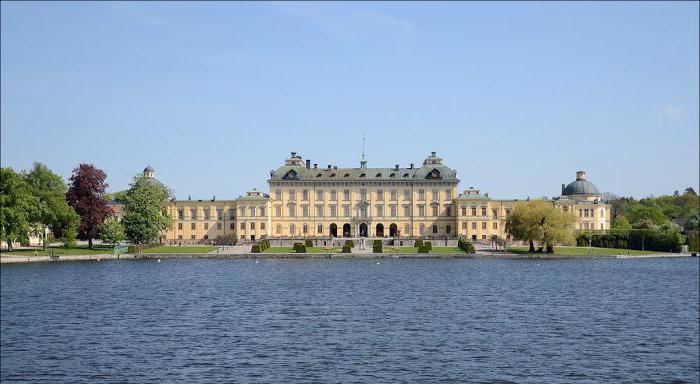
English-speaking Sweden
The capital of Sweden, whose official language is Swedish, is almost entirely English-speaking. This is due to high level teaching foreign languages in public schools, and also with the fact that many Swedish television channels broadcast in English language with Swedish subtitles. The same applies to foreign films shown in cinemas. Most distributors simply do not dub films, but provide them with subtitles.
This scheme allows you not only to save money on voice acting, but also provides an opportunity for constant practice in a foreign language.

Sweden: state language as a source of pride
The Swedes are very pragmatic about their language and do not consider it necessary to specifically control its natural development. Unlike France or Iceland, where special government institutions monitor how the language is used, in Sweden the Language Council does not exercise formal control, although it is funded by the government.
This may be due to the fact that Swedish is the most widely spoken language in northern Europe, with more than nine million speakers. However, already in neighboring Finland, the Swedish language is looked after by the official Research Institute of the Languages of Finland, where Swedish is the second state language and is recognized by the overwhelming majority of Finnish citizens as an integral part of the national culture. It is worth noting that in the Kingdom of Sweden the state language is not named in the Constitution and has no official status, but de facto all citizens speak it.

The monarch is a symbol of the state
Head of State and national symbol is the monarch. The current Charles XVl Gustav of the Bernadotte dynasty ascended the throne in 1973. Meanwhile, the dynasty to which the ruling monarch belongs established itself in the country in 1818, and its founder was Napoleonic Marshal Bernadotte, who was Napoleon Bonaparte’s faithful companion for many years in the most difficult military campaigns.
The Swedish monarchical tradition is considered one of the oldest in Europe. The first monarchs whose existence is reliably known ruled in the Swedish lands back in the 5th century.
The Kingdom of Sweden, whose official language is one of official languages The European Union makes a great contribution not only to the European economy, but significantly enriches the culture of Europe. For example, the famous Finnish writer Tove Jansson wrote her popular books in Swedish.
Swedish society is considered one of the most prosperous in the world. A high quality of life and a significant level of human development are achieved thanks to a complex political system that has been created over the past two centuries. Having gained invaluable experience of defeats in major international conflicts, the kingdom was forced to focus on developing its own economy and building an open, fair society.
Sweden: capital, head of state, official language
The largest is Stockholm. Since its founding at the beginning of the 12th century, Stockholm immediately established itself as a major economic center in Northern Europe. Today, the Swedish capital continues to position itself as the capital of all of Scandinavia, attracting large numbers of tourists from all over the world.
Stockholm is home to the residence of the monarch, the country's parliament and the Academy of Sciences, whose members select candidates for the Nobel Prize. The Nobel Committee also meets in the capital.
Sweden, whose official language is Swedish, nevertheless recognizes the right to use its own languages in everyday activities. Languages officially recognized by the Swedish government include Sami, Meänkieli, Finnish, Romani and Yiddish.
The northernmost region of Sweden, Norrbotten, is home to Sami and Finnish people who speak Meänkieli and Finnish. It is in this region that the use of indigenous languages is allowed in official institutions such as kindergartens, nursing homes and schools.
The official language of Sweden is related to Danish and Norwegian. However, despite very similar grammatical systems and great similarities in vocabulary, understanding is often difficult due to phonetic differences, most notably with the Danish language.

English-speaking Sweden
The capital of Sweden, whose official language is Swedish, is almost entirely English-speaking. This is due to the high level of teaching foreign languages in public schools, as well as the fact that many Swedish television channels broadcast in English with Swedish subtitles. The same applies to foreign films shown in cinemas. Most distributors simply do not dub films, but provide them with subtitles.
This scheme allows you not only to save money on voice acting, but also provides an opportunity for constant practice in a foreign language.

Sweden: state language as a source of pride
The Swedes are very pragmatic about their language and do not consider it necessary to specifically control its natural development. Unlike France or Iceland, where special government institutions monitor how the language is used, in Sweden the Language Council does not exercise formal control, although it is funded by the government.
This may be due to the fact that Swedish is the most widely spoken language in northern Europe, with more than nine million speakers. However, already in neighboring Finland, the Swedish language is looked after by the official Research Institute of the Languages of Finland, where Swedish is the second state language and is recognized by the overwhelming majority of Finnish citizens as an integral part of the national culture. It is worth noting that in the Kingdom of Sweden the state language is not named in the Constitution and has no official status, but de facto all citizens speak it.

The monarch is a symbol of the state
The head of state and national symbol is the monarch. The current Charles XVl Gustav of the Bernadotte dynasty ascended the throne in 1973. Meanwhile, the dynasty to which the ruling monarch belongs established itself in the country in 1818, and its founder was Napoleonic Marshal Bernadotte, who was Napoleon Bonaparte’s faithful companion for many years in the most difficult military campaigns.
The Swedish monarchical tradition is considered one of the oldest in Europe. The first monarchs whose existence is reliably known ruled in the Swedish lands back in the 5th century.
The Kingdom of Sweden, whose state language is one of the official languages of the European Union, makes a great contribution not only to the European economy, but significantly enriches the culture of Europe. For example, the famous Finnish writer Tove Jansson wrote her popular books in Swedish.
Belarus is a country in eastern Europe. Previously it was part of the USSR, and in 1991 it left it. Nowadays it has several names - Belarus or Belarus. And the official name has been preserved for 25 years - the Republic of Belarus. The history of this country is very rich. She, like Ukraine, was under the rule of the Poles, Russian Empire, Principality of Lithuania.
General information

But this did not last long. Again, a month later, the republic was disbanded, and part of the provinces went to the RSFSR, and part became the Lithuanian-Belarusian Soviet Socialist Republic. Litbel did not live long - already in the summer of 1919 it was occupied by the Poles.
Later, with the formation of the USSR, the named territory began to be called the Belarusian Soviet Socialist Republic. And since 1922, it was under the control of the USSR, although not in full force.
Pre-war time
Despite the fact that, according to the agreement, some provinces were not added to the territory of Belarus, it nevertheless increased significantly. The country accounted for half of the modern area of the state. More than 70% were Belarusians. The population reached 4 million people.
Therefore, the proclamation of Belarusization is not accidental. In addition to culture, they also took care that the state language of Belarus was paramount. Although it was difficult to implement the plan, since the territories were divided between states, and this influenced the speech of the residents. Until the mid-30s, the republic had several official languages: in addition to Belarusian, Russian, Polish and Yiddish. The latter was popular among the Jewish population until 1999. At that time, it was spoken by about 7% of the population.
The well-known slogan “Workers of all countries, unite!” it was written in four languages, but, in addition, there was also a Polish national region on the territory of the republic.
At the same time, a language reform was taking place, which eliminated Tarashkevitsa, as a result of which the state language of Belarus was reformed and became similar to Russian. More than 30 phonetic and morphological features were added to the spelling.
Over time, the political and social situation began to deteriorate. There were many fewer schools, and the population remained illiterate. There were about 200 students. More than a half Orthodox churches became Catholic. The crisis forced tens of thousands of residents to emigrate to Europe and America.
Becoming
After World War II, the republic was engaged in restoration, like other lands of the USSR. Only after the collapse of the Union did it receive the title of parliamentary. Residents began to call their newly-created country the head of state, and the state language continued to take shape. was the first to take the reins of power, but only until 1994.
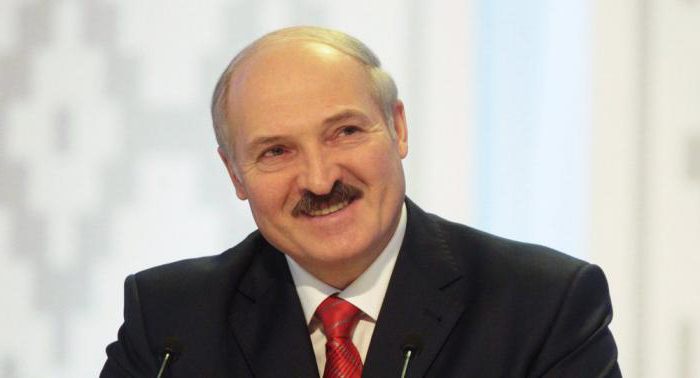
It was then that the country’s constitution was formed, and presidential elections were held. Alexander Lukashenko became the first and so far only president of Belarus. The form of government became parliamentary-presidential. In 1995, the Russian language of Belarus received state status.
Alexander Lukashenko won the elections in 2001, followed by 2006. Then, in 2010, he was re-elected for the fourth time. Moreover, both the EU and the United States and the OSCE have demonstratively not recognized the election results since 2001. When Alexander Lukashenko became president again in 2015, the EU suspended sanctions against the Republic. Last time, more than 83% of the population of the entire country voted for him.
Languages
As mentioned earlier, on this moment The official languages of Belarus are Belarusian and Russian. But part of the population can communicate in Polish, Ukrainian, Lithuanian. At the same time, language tolerance is observed in the country.
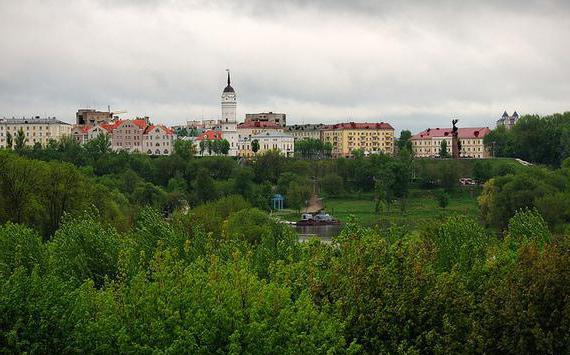
In practice, the majority of the population is still Russian-speaking. Many of those who live in the capital and major cities, they completely forgot Belarusian. Young people practically don’t know him. IN small towns you can find trasyanka (surzhik in Ukraine). This mixture of Russian and Belarusian does not correspond to the norms of any of the named languages. It happens that some official persons can speak Trasyanka. Pure Belarusian can be found only in small villages, in rural areas. Sometimes it is used by intellectuals and patriots.
Culture
The nationalities, languages and traditions of Belarus are diverse. As mentioned earlier, here you can also meet those who speak Polish, Lithuanian, Ukrainian and even Hebrew. The Russian language is compulsory in the school curriculum. The Cyrillic alphabet is used for writing.

Nowadays, more than 80% of Belarusians, 8% of Russians, 3% of Poles, 1% of Ukrainians live in the territory of the Republic of Belarus. There are also Lithuanians, Armenians, Jews, Gypsies, Georgians, Chinese, Arabs, Chuvashs, etc. The population of the country has been shaped by history. Indigenous people have always lived in large villages. There are Jews in the cities, there are many Poles in the north, and Russians in the east. Part of the southern territory was occupied by Ukrainians. Despite the fact that more than 80% of the population is Belarusian, a diverse ethnic composition can be observed in the villages.
Most of the traditions of this state are similar to Ukrainian or Russian. This is due to the fact that almost all holidays and rituals are based on Christian customs. The only difference is in the name. For example, the famous Trinity here is called Syomukha, Ivana Kupala - Kupalle, Peter's Day - Pyatro.
There are also special days that can be found only in the villages of Belarus, Ukraine or Russia: Radonitsa, Clicking of Spring, Gromnitsa or Grandfathers. Crafts are also considered traditional in the republic: weaving, woodworking, pottery, and straw weaving.

Belarus is a very cultural and calm country. The state language - Belarusian - unfortunately, is slowly ceasing to exist, although it is unlikely that it will completely disappear. Still, a huge number of people in villages and villages still use it in everyday life. They will continue to teach their children and grandchildren their national language.


French Republic.
Capital: Paris.
Head of state: president.
Official language: French.
Territory: 551,500 sq. km.
Population: 59,300,000 people.
“It seems that Providence itself raised the mountains, brought the seas closer, indicated the beds of all the rivers in order to create from this country the most prosperous place on Earth,” wrote the Greek geographer Strabo, visiting Gaul - the place where hundreds of years later arose beautiful state France.
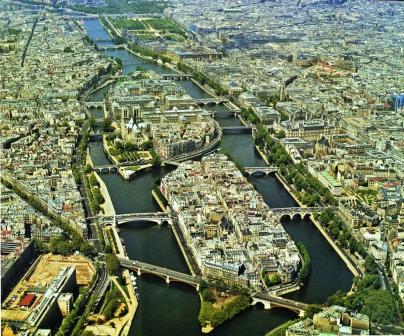
Surely you know that France is a country of great writers, politicians, and inventors! I have heard more than once about Napoleon and Charlemagne, Charles de Gaulle and Joan of Arc, Antoine de Saint-Exupéry and Alexandre Dumas, Coco Chanel and Brigitte Bardot. You will meet them and other famous Frenchmen on our journey through this amazing country, which has captivated the hearts of the inhabitants of the entire planet since ancient times.
![]()
France is the largest country in Western Europe! In addition to European territory, it has several departments and overseas possessions in South America, in the Indian and Pacific oceans.

France has very good geographical position. It is located at equal distances from the equator and the pole, in the temperate climate zone. For Europe, France is an important “crossroads” through which the main trade routes passed already in ancient times.
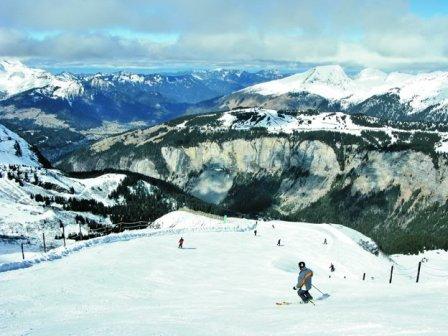
France is a country of sea coasts and high mountains. She washes herself Atlantic Ocean, the English Channel and Mediterranean Sea. And two mountain systems- The Alps and Pyrenees form its natural borders.
The outline of France resembles a hexagon. When the French talk about their country, they often call it exactly that - hexagon, or poetically - star.
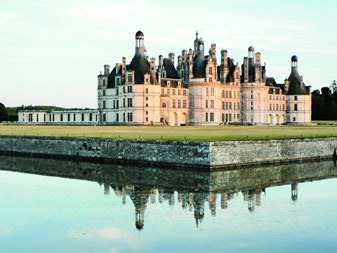
The culture of France influenced all world art. Real masterpieces were created here: architecture - for example, the Eiffel Tower, the Louvre, the Arc de Triomphe; literature - “The Three Musketeers”, “Children of Captain Grant”, “The Little Prince”; paintings - paintings by impressionist artists...
France is a country of amazing discoveries and inventions. The French, the Montgolfier brothers, were the first to take to the skies in a hot air balloon. After this, aeronautics attracted the attention of all people on the planet. This hobby was called a strange word “balloonomania”! And all because balloon in French it is called “balloon”.
Cinema is no exception! In 1895, the first film was shown in the Grand Café salon on the Boulevard des Capucines in Paris!
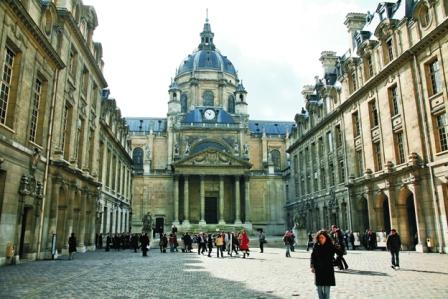
By the way, the Cannes Film Festival and the Cesar Film Awards (analogous to the American Oscars) are also French inventions. And you definitely watched comedies with Louis de Funes and Gerard Depardieu!

France is a highly developed country. Iron ore and bauxite, coal and potassium salts are mined here. Machine-building factories create the cars that you constantly see on the streets of your city.

Cheese, mayonnaise, meatballs, cutlets, omelettes... Long, crispy, amazingly tasty baguettes - it’s so nice to bite off the top of them while you take them home from the bakery... We owe all this deliciousness to the French. After all, for them cooking is an art. There are almost 400 varieties of cheese in France alone!

And in the French region of Champagne, a drink was invented that became an integral element of the New Year celebration - champagne! Let's thank France again for the festive Olivier salad and chocolate!
Oh, Paris!
This city has a long and eventful history. More than two thousand years ago it was founded by the Gauls on the island of Cité, located in the middle of the Seine River. Now the banks of this river are connected by 32 bridges.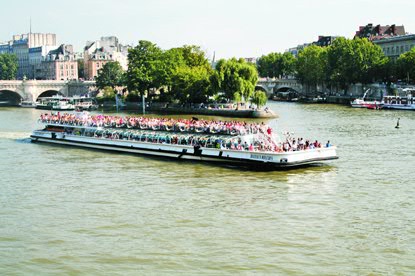
Later, in the 12th century, the famous Notre Dame Cathedral (Notre Dame de Paris), praised by many writers, was built on the Ile de la Cité.

Gradually, Paris grew and went far beyond the island.
Paris has been the scene of many historical events. During the French Revolution, on July 14, 1789, the townspeople stormed the Bastille, a fortress-prison, and freed the prisoners thrown there by order of King Louis XVI. Since then, July 14, Bastille Day, has been celebrated as a national holiday in France.
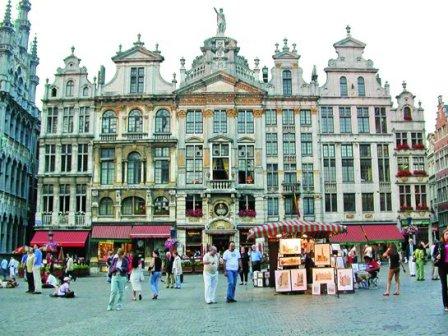
During the celebration of the centenary of the storming of the Bastille, the first world exhibition took place in Paris. The famous Eiffel Tower was built especially for her by the French engineer Gustave Eiffel. It was supposed to serve as a kind of entrance, and after the exhibition they planned to dismantle it, but they never decided to do so. At the time, the tower was the tallest structure in the world (its steel structure is 300 meters high and weighs 6,900 tons). These days, the Eiffel Tower is the most famous symbol of Paris. If you take the elevator up to the tower, you can admire a beautiful bird's eye view of the city.
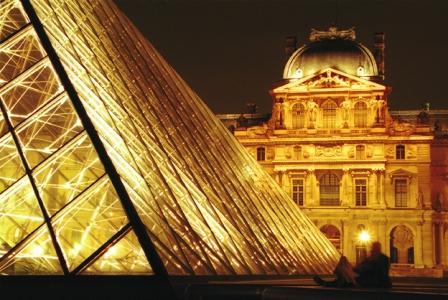
Paris is a city of art. There are many museums here, storing the best works of world art. The most famous of them is the Louvre. It is located in the former royal palace. In the Louvre you can see the famous “La Gioconda” by the great Leonardo da Vinci, as well as ancient sculptures: the Nike of Samothrace and the Venus de Milo. And if you want to look at the work of contemporary French artists, welcome to Montmartre Hill. Numerous artists, graphic artists and caricaturists will draw your portrait or caricature for a small fee in just a few minutes.
![]()
Montmartre is not only the artistic center of Paris, but also its highest point. At the top of the hill is the famous Sacré-Coeur Basilica, which can be reached by stairs or by cable car.
The Arc de Triomphe was conceived by Napoleon back in 1806. It was supposed to symbolize the strength of the imperial power and army. Construction of the arch lasted 30 years and ended after the death of Napoleon. In 1920, under Arc de Triomphe The Eternal Flame was lit in memory of an unknown soldier who died during the First World War. The majestic arch adorns one of the most beautiful streets in Paris - the Champs Elysees.

At night, millions of lights light up on the streets of Paris. This is a real city of illuminations. As the writer Ernest Hemingway correctly noted: “Paris is a holiday that is always with you!”




